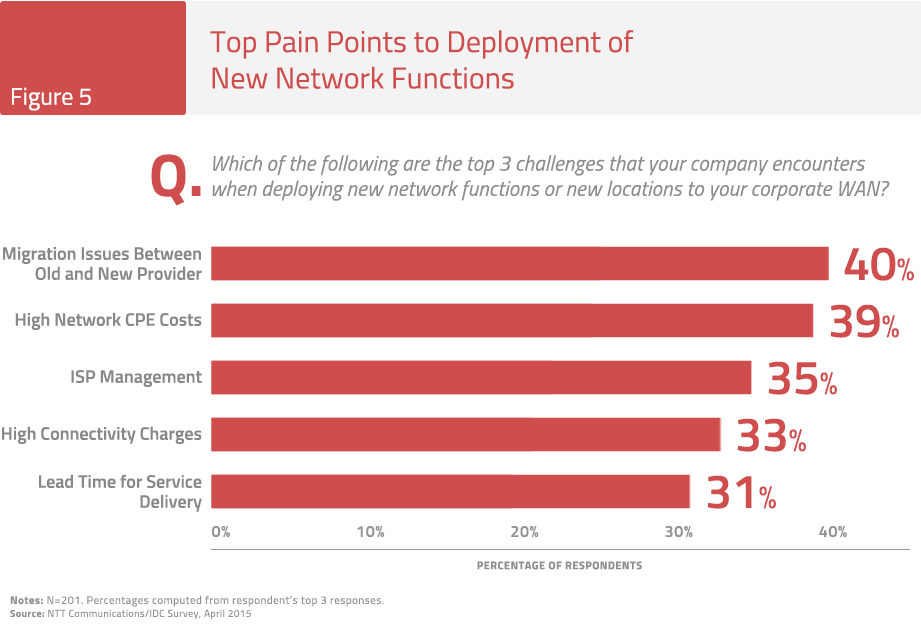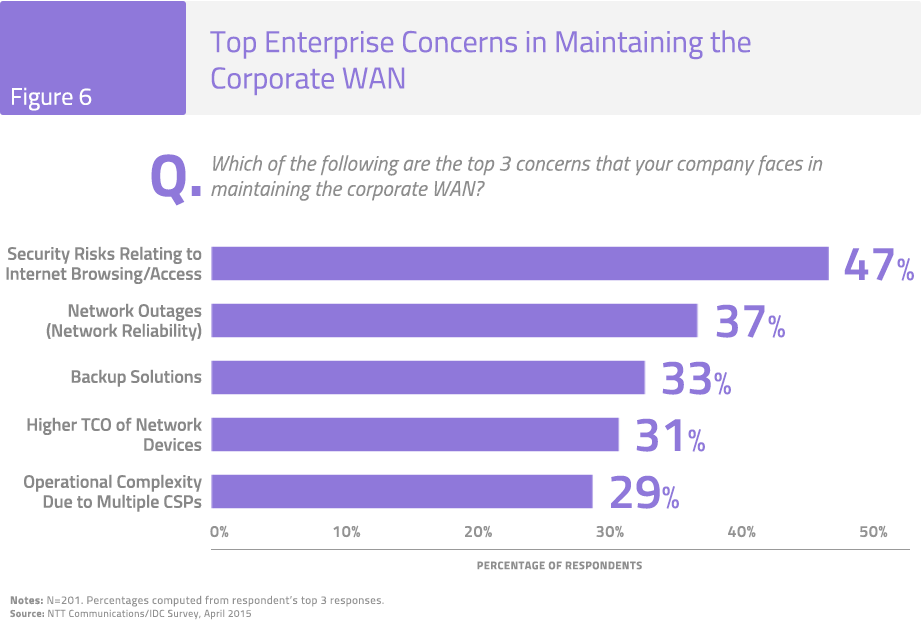Operational Pain Points and Concerns of Today’s WAN
As more enterprises become increasingly global, there is a requirement for enterprises to rapidly spin up new business locations. However business WAN and communications services often become an operational bottleneck. More enterprises are attracted to the lower cost and rapid service delivery of Internet-based service compared to the traditional WAN service which can take from 60-120 days to deliver and incur higher recurring connection cost. However Internet-based service often requires ISP management, and management of multiple ISPs is a complex and expensive task. Leveraging a service provider to manage multiple ISPs is an important consideration for enterprises.
Another issue is the prohibitive cost of managing CPE across geographically disparate locations. Monitoring and maintaining complex network hardware requires costly personnel and support structures. This inhibits flexibility and contributes to long lead time for the deployment of new applications which is another key pain point for the enterprise.
The chart below (Figure 5) illustrates some of the key challenges facing enterprises in the process of deploying new network applications.


Cloud adoption and mobility also create new pain points. Security risks and network reliability highlight some of the top concerns that enterprise CIOs consider for their WAN services from a global perspective (see Figure 6).
Cloud services shift the destination for many applications and, as a result, change the topology of the WAN as well. This presents the necessity for new security approaches, while also bringing up the importance of network scalability, availability, more bandwidth and also application performance to sustain end-user experience. Key concerns include the provision of cost effective network redundancy and business continuity solutions.
CIOs are also realizing that the complexity of managing a diverse range of WAN appliances or devices at branch sites adds to higher lifecycle costs as evidenced by the survey results for TCO of network services. CSPs can offer tremendous value to enterprises by providing cost effective solutions for delivering and maintaining network functions.
Managing multiple CSPs to support globally-distributed workforces using cloud-based applications can get costly and inefficient for enterprises, which is a direct reflection of the concern on managing multiple CSPs in the chart below. Enterprises can leverage the resources and global reach of CSPs like NTT Com to manage multiple service providers. This can facilitate the consolidation of CSP contracts, which would contribute to reduced IT personnel and enterprise management requirements.

